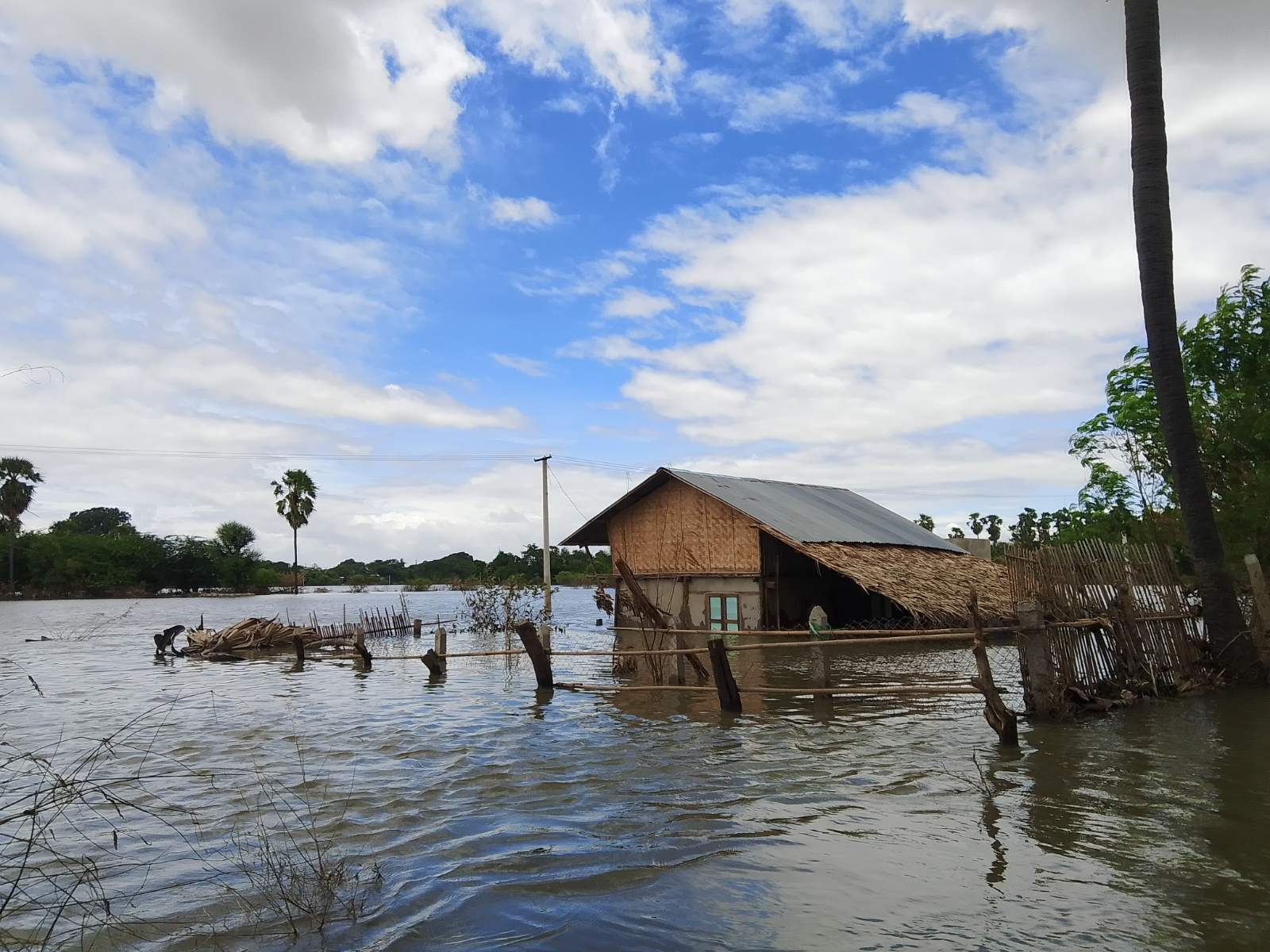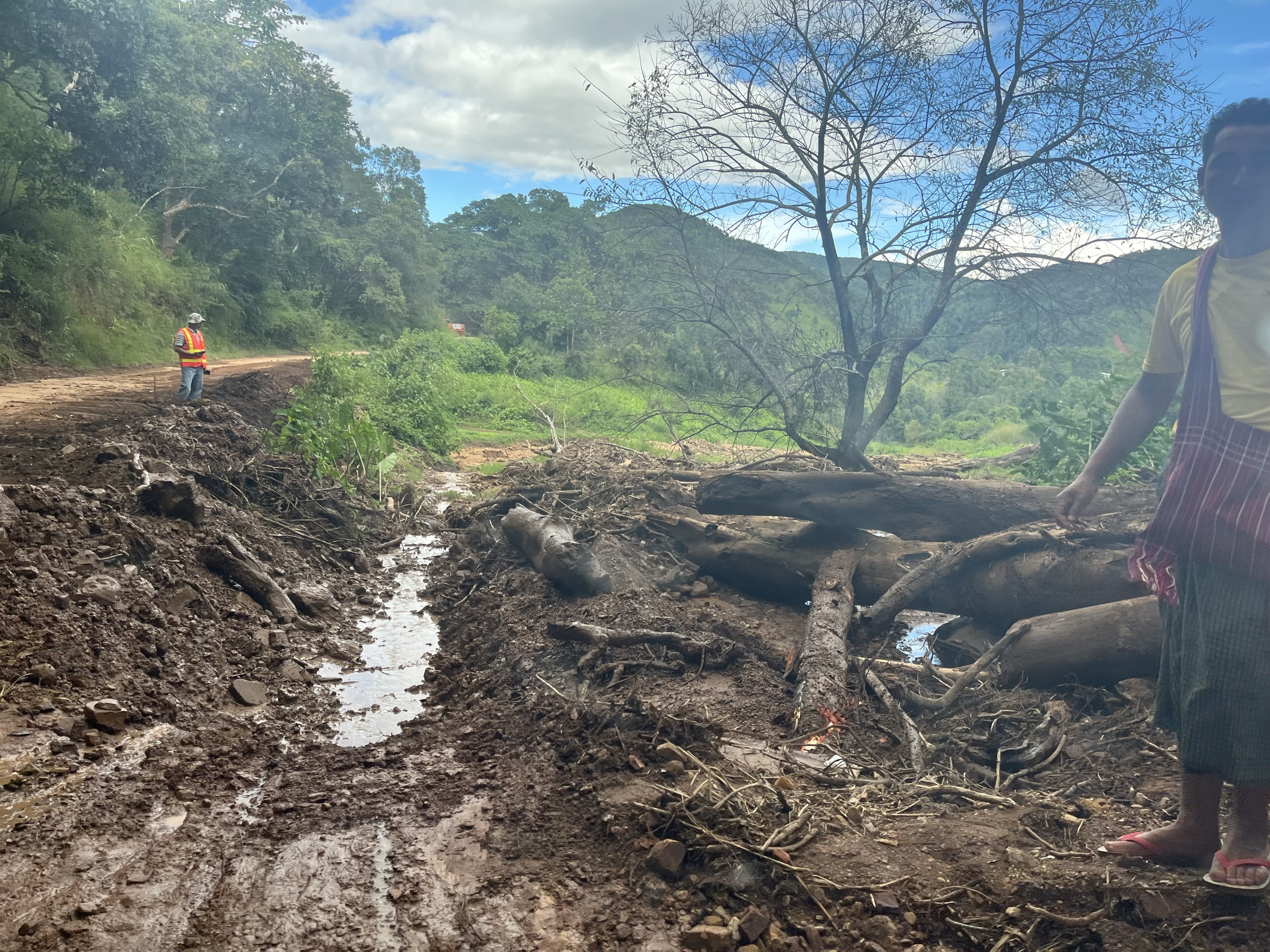
As we mark International Day for Disaster Risk Reduction (IDRR) 2024, UNDP Myanmar reflects on the ongoing need to enhance community resilience and preparedness in the face of increasing climate-induced disasters. The recent impact of Typhoon Yagi in September reminds us of the importance of disaster risk reduction at the community level.

Floodwaters have taken over a village in Myanmar’s Dry Zone, forcing residents to use boats to reach their homes and retrieve what remains.
In September 2024, Typhoon Yagi caused heavy rains and severe flooding across nine states and regions, including Southern and Eastern Shan, Kayah, Mandalay, Naypyidaw, Magway, Kayin, Bago, and Mon. Thousands of homes were submerged, and livelihoods disrupted, exacerbating the hardships faced by communities already dealing with conflict and socioeconomic challenges.

A once peaceful home in Nyaung Shwe Township now stands partially submerged as floodwaters take over the landscape.
In response to these challenges, UNDP, through its Enabling Community Recovery and Resilience (ENCORE) project, has been working closely with affected communities to support recovery efforts and build long-term resilience. The ENCORE project is a key part of our work to empower communities and foster preparedness for future disasters.

A house in Kalaw, Shan State, almost completely ruined and sunk into the muddy ground after severe flooding. A road in this village has also been destroyed by the floodwaters, leaving the community devastated.
Immediate Response: Supporting Communities Post-Disaster
In the aftermath of Typhoon Yagi, UNDP is distributing Household Emergency Assistance Packages (HEAP) to thousands of flood-affected households. These packages, including hygiene kits, food, tools, clothing, and basic medical supplies, are being delivered to the vulnerable communities in regions such as Nyaung U Township in Mandalay region, Kamma and Sinbaungwe in Magway region, Hpa An in Kayin State, Bago region and Southern Shan State, including Taunggyi, Kalaw, and Nyaung Shwe townships.

Communities in Kamma Village, Magway Region, receive HEAP packages, offering crucial aid as they recover from the recent flooding.

A woman in Kamma Village, Magway Region, carries essential relief supplies from the HEAP package, providing vital support for her household.
Fostering Early Preparedness and Risk Awareness
A cornerstone of our efforts in disaster risk reduction is ensuring that communities are educated and equipped to respond before disasters strike. UNDP disseminates weather forecasts and early warning information through the SEAD Agro-Advisory Viber community, enabling real-time updates that help at-risk populations take precautions. Through this platform, we educate communities on understanding weather patterns, improving their disaster preparedness, and strengthening their capacity to act when emergencies arise.

A screenshot photo of SEAD Viber Agro-Advisory community - through this, UNDP provides real-time weather forecasts and early warnings, supporting communities in mitigating disaster risks.
Additionally, we are set to launch risk management and awareness training, aimed at helping communities recognize and address disaster risks more proactively. These initiatives are designed to empower local community leaders and residents with the knowledge and tools to take effective measures during crisis situations.
Strengthening Community Infrastructure
A key aspect of resilience is ensuring that local infrastructure is built to withstand future disasters. Through the ENCORE project, UNDP is working with communities to reinforce vital infrastructure in flood-prone and vulnerable regions. These efforts include upgrading community facilities and improving infrastructure that can reduce the impact of natural hazards, ensuring that communities are better equipped to recover and thrive after crises.

The aftermath of flooding in Kalaw, Shan State, has left the main road buried in debris, fallen trees and mud. The road is now inaccessible, hampering recovery efforts and isolating the local community.
Moving Forward
As we commemorate IDRR 2024, our focus remains on sustainable community resilience. While addressing immediate needs is essential, long-term investments in disaster risk reduction and preparedness are critical to reducing vulnerability. UNDP Myanmar will continue working alongside local communities and partners to build stronger, more resilient societies that can adapt to and overcome future challenges.

Community in Sinbaungwe Township, Magway Region, receive HEAP packages, offering crucial aid as they recover from the recent flooding.

 Locations
Locations